Last week, the Bureau of Development Services (BDS) posted the summary notes of the Early Assistance meeting between the developers of the Alpenrose site and the city permitting bureaus.
I was probably a happier person before I knew what all that meant.
But I’m trying to understand how it has come to pass that, over half a century after the southwest was annexed to the City of Portland, the quadrant persists in having such bad sidewalk coverage and incomplete bike facilities despite steady growth in population and new buildings.
Understanding the nitty-gritty of “why” ends up being a wonkfest at the intersection of transportation and land use policy. But that wonkiness goes down a little easier if you can watch decisions roll out in real time.
The high-profile Alpenrose housing project which has begun moving through Portland’s development review system provides an opportunity to do just that. And the notes from the Early Assistance meeting are the public’s first peek at the decisions the Bureau of Environmental Services (BES) and the Portland Bureau of Transportation (PBOT) will make about sidewalks and bike lanes. These early decisions determine whether sidewalks and bike lanes will be built at all.
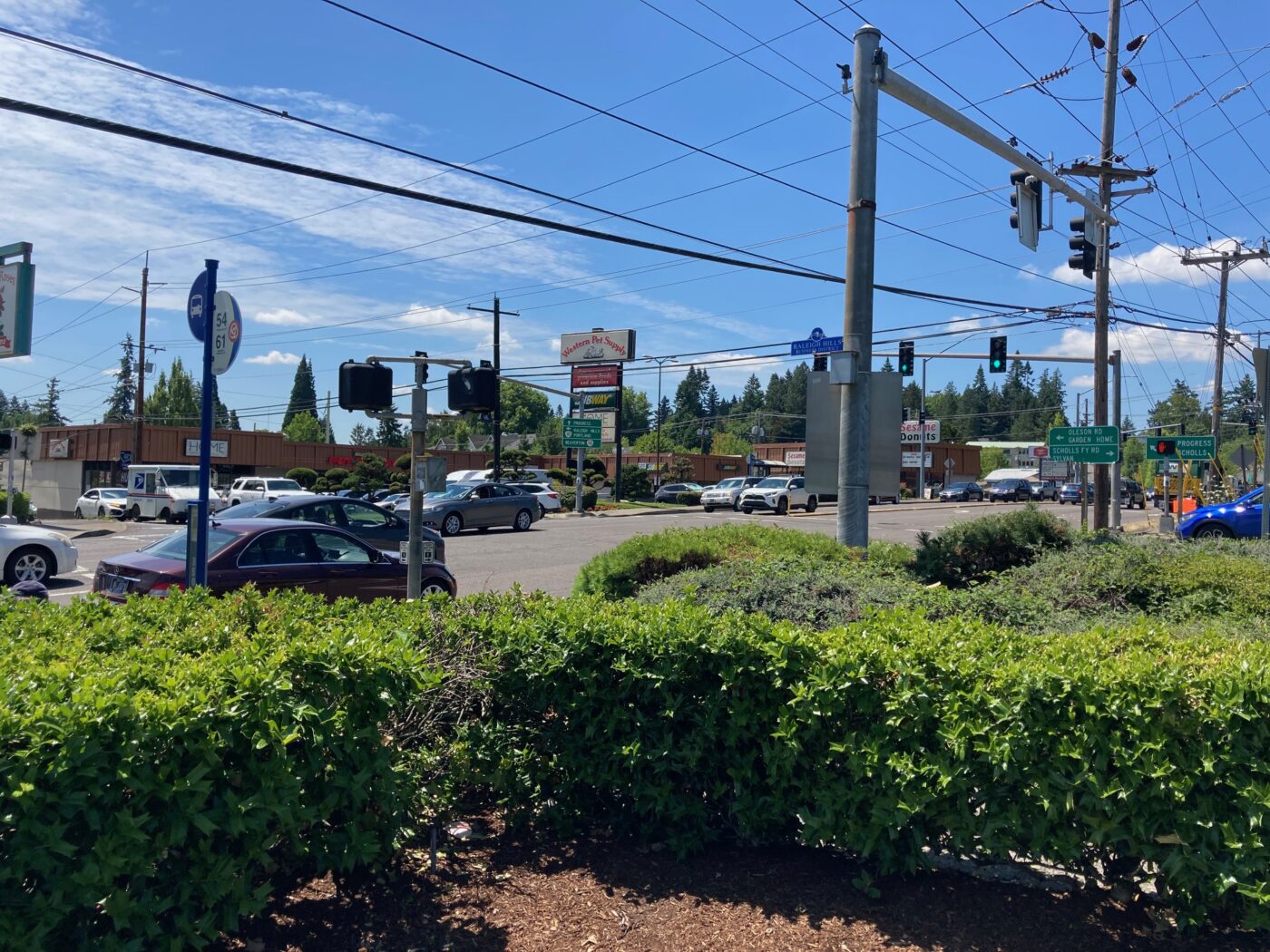
The development
The developers have proposed dividing the 51-acre property into approximately 307 lots of attached and detached houses. Depending on the ratio of attached to detached houses, some of the detached houses could still come with a generous lot size, say a quarter of an acre.
A 51-acre development proposal is unusually large for Portland, and the Alpenrose project will be the first of its kind coming under review since “Missing Middle Housing” legislation was adopted at both the local and state levels.
You might recall that the recent middle housing zoning changes allow homeowners to build up to four units on most residential lots. In Portland, this new zoning policy was called the Residential Infill Project (RIP), and the City Council adopted it in 2020. The council was not unanimous in its decision to loosen zoning regulations, but proponents argued it was necessary for dealing with housing scarcity, and also as a response to racist and exclusionary zoning policies.
The catch is that the future owners of each of the 307 new Alpenrose lots will also be allowed to exercise their “missing middle” zoning rights. That means they could add more dwellings to each property. Thus the 307 units could expand into a “reasonable worst-case scenario” that would overwhelm area infrastructure, particularly transportation. As BDS noted,
ORS does not allow us to impose conditions of approval that would disallow middle housing development types; at this point staff needs to understand more about the challenges to infrastructure and specifically transportation limitations before being able to weigh in on whether the proposal is approvable or not as proposed, or what conditions of approval would be enforceable or desirable to address the issues.
It continued, “the importance of addressing the infrastructure challenges with this site cannot be overstated.”
PBOT also weighed in,
Adequacy of services findings and compliance with the comprehensive plan policies needs to be analyzed based on the anticipated demand from the full buildout potential of the requested zoning.
I don’t know if RIP proponents had vast tracks of new development in mind when they crafted the zoning changes, but the bureaus appear to be wrestling with a “dog catches car” scenario of too many houses for an inadequate transportation system.


Active transportation and the two-bureau shuffle
The specific purpose of the Alpenrose Early Assistance meeting (also known as a Pre-Application Conference) was to discuss the Comprehensive Plan Map and Zoning Map Amendments, as well as a Land Division Review, which the extensive development plan would require.
Early Assistance meetings are organized as an exchange of information which lets various bureaus comment on requirements and key issues in advance of the developer submitting an application.
And this is where the two-bureau shuffle begins.
From a transportation point of view, the most relevant Early Assistance comments come from BES and PBOT. What is important to understand is that BES is in the driver’s seat, PBOT cannot do much unless BES agrees to build new stormwater facilities.
PBOT starts out strong, “The applicant should anticipate sidewalk and bicycle facility construction along SW Shattuck Rd. and SW Vermont St. for the entire length of the parent parcel at the time of the future development.”
Quickly back tracks, “some form of pedestrian and bicycle improvement is needed in the public right-of- way, but it is anticipated that full standard improvements may not be feasible.”
And concludes that “If improvements are not fully waived, then a Public Works Permit is needed to inform approval of non-standard improvements through the Public Works Alternative Review process.”
PBOT went from requirement to waiver in three short pages.
The Public Works Alternative Review (PWAR)
The quote above mentions the Public Works Alternative Review. The PWAR is a process whereby an applicant can request allowance to build an alternative design to standard improvements in the public right-of-way, if for some reason the city decides that standard frontage improvements like sidewalks and bike lanes cannot be built.
About the Alpenrose project specifically, PBOT writes that,
It is anticipated the applicant will wish to propose an alternative to the standard given the terrain and natural resources present for some portions of the existing rights-of-way.
PBOT doesn’t mention lack of stormwater conveyance as a reason that a sidewalk can’t be built, but Shattuck, like most southwest Portland streets, drains its stormwater into area streams. A sidewalk would require a bioswale or a stormwater basin to treat sidewalk run-off, like the ones the city built off of Capitol Highway.
The PWAR committee is composed of managers from PBOT, BES, Water, and Urban Forestry. Their decision process is not public. It is a black box which tends to output tersely worded requirements such as, “The applicant shall provide a minimum 6-ft wide paved shoulder widening.” Unfortunately, PWAR is where sidewalks and bike lanes go to die.
Throughout the document, PBOT and BES defer to PWAR decisions as if they weren’t involved with making them. Here’s BES,
Frontage improvements as described by PBOT may trigger stormwater management requirements. If frontage improvements must be built with this land division (depending on the results of any requested Alternative Review Committee decisions) and the improvement trigger stormwater management requirements, BES will require approved PWP Concept Development …
If BES does not want to build public stormwater facilities, the PWAR solution usually has pedestrians walking at grade with cars, either on the road or to the side of it along a goat path.
What happens next
The next step in the development review process will be the actual Public Works Alternative Review decisions themselves. Those will be the first indication of the city’s support for safe spaces to walk and bike. Those decisions bake-in the frontage requirements early in the process, and the whole subdivision will be designed around them.
PWAR decisions are available with a public records request.
Lawyering up
One of the most curious paragraphs in the Early Assistance Summary comes from PBOT and advises the applicant about defending against legal challenges:
If the proposed land division is challenged or opposed by neighbors or the area’s neighborhood association, PBOT will not have any supporting documentation in the record to refer to other than the applicant’s narrative. This is raised because of similar experiences in the past when other partition proposals were challenged, opposed to or appealed. In those cases, applications were required to be placed on hold for information to be collected, prepared and submitted, or applications were fundamentally denied due to the lack of adequate and credible evidence in the record. PBOT staff may be able to determine that the project will not result in detrimental impacts to the surrounding transportation system or immediate neighborhood, but the applicant is advised that if the decision on this project is appealed, the higher decision-making bodies have not (solely) relied upon PBOT’s assessment and/or recommendation. The applicant is referred to Zoning Code Section 33.800.060 which states that “the burden of proof is on the applicant to show that the approval criteria are met; the burden is not on the City or other parties to show that the criteria have not been met.”
And the truth is that that the entire process can be litigious. What PBOT doesn’t mention, possibly because this document is in the form of a memo between city bureaus and the developer, is that another worry the city has is that it will be sued by the developer.
This can happen if the developer feels that the city is trying to exact too much from them in terms of public works, like providing expensive stormwater facilities for sidewalks, for example. The body of jurisprudence regarding these types of suits is referred to as Nollan/Dolan.
Keep in mind that “Dolan” is Dolan v. City of Tigard, a case decided in 1994 by the U.S. Supreme Court which is considered a landmark regarding zoning and property rights. The Dolans did not want to dedicate land for the adjacent Fanno Creek Trail.
That land use decision occupies significant real estate in Portland’s mind.
Wrapping it up
I’m eager to see the PWAR decisions. If they follow the usual “southwest rules,” Shattuck will get a treatment similar to Gibbs St. Or maybe the PWAR will select a treatment out of the alternatives in the Pedestrian Design Guide.
On the other hand, allowing over 300 new housing units to be built without a sidewalk on the northern Lot 1 and Lot 2 portions of the property is outrageous, and might be challenged.
Stay tuned.



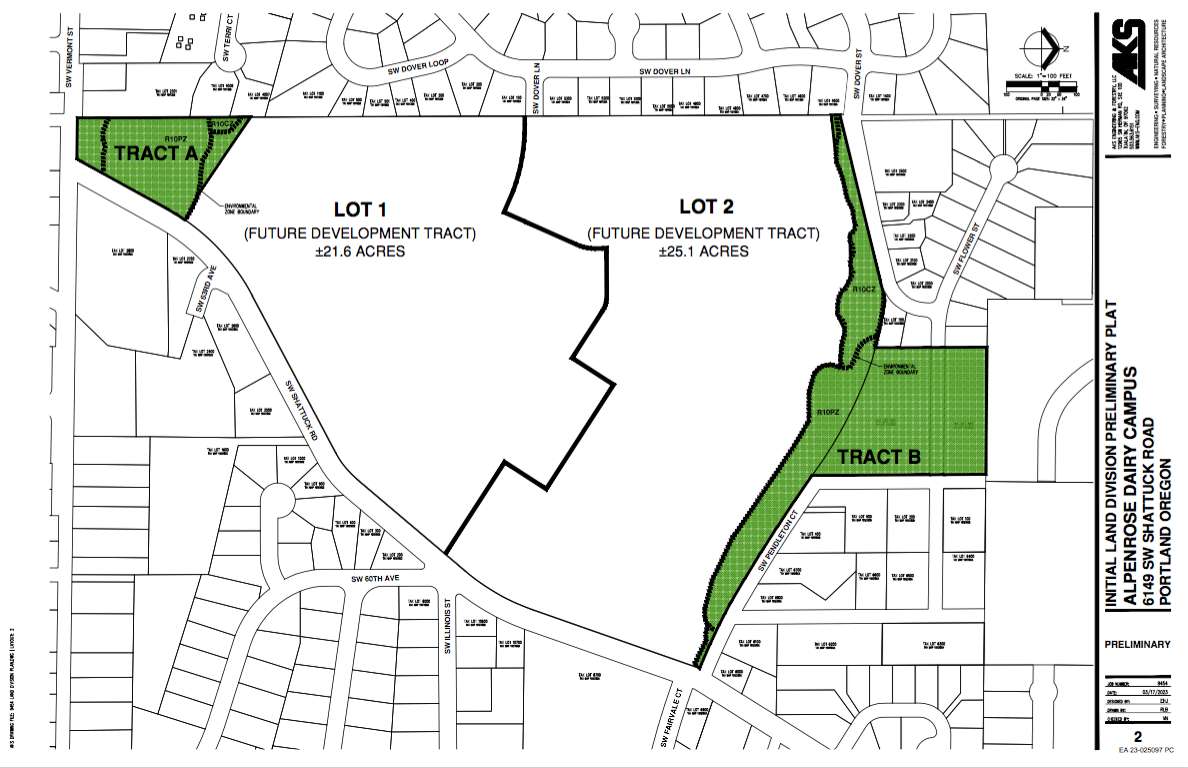
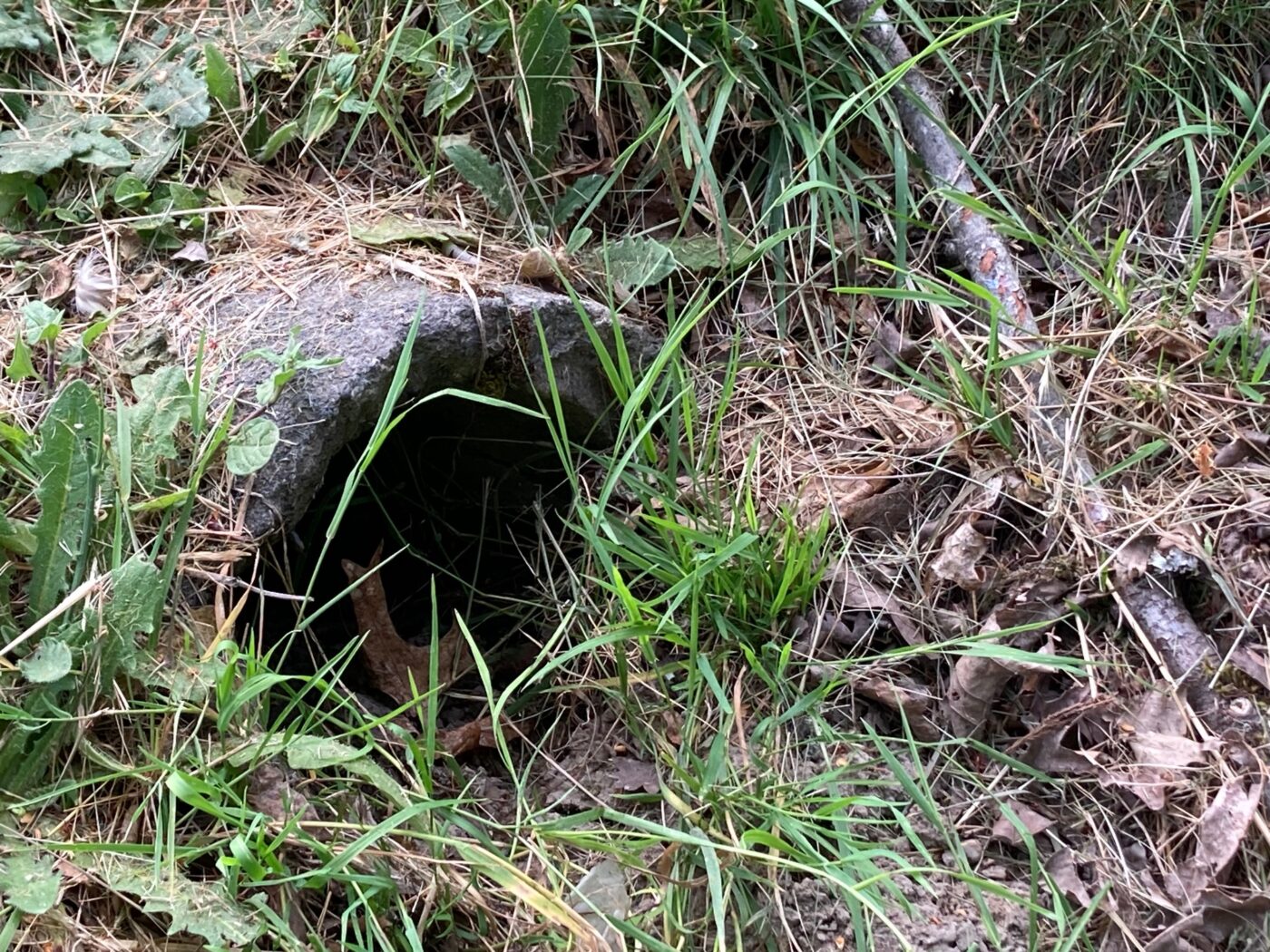
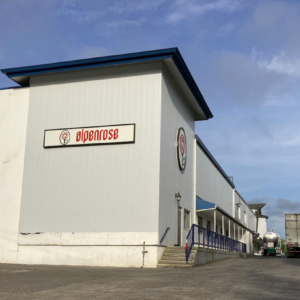
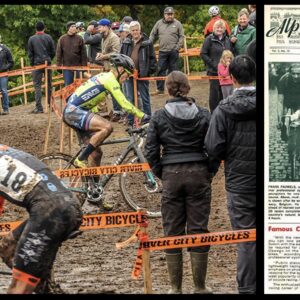
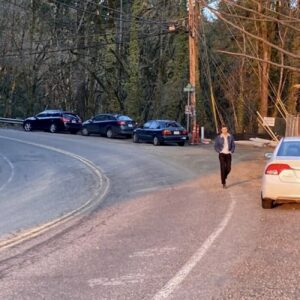

Has PBOT forgotten about the new (likely privately funded) sidewalks by the new subdivision alongside SW 48th Avenue that’s between SW Iowa Street and SW Cameron Road? It is on a designated safe-routes to school but those sidewalks are on a dead-end street for cars.
What about them? I assume you are talking about that one small stretch of sidewalk at the base of the development that runs between the new swales. It’s a nice bit of sidewalk but I get the impression it’s there only b/c the swales are. It doesn’t really move the needle since you have to walk on 48th – on the street for the rest of its length.
Shattuck is a major connector road and should have a continuous sidewalk and bike lane along its entire length – not comparable to 48th.
Why is there a new sidewalk on that stretch of SW 48th Avenue yet Portland might not require accommodations for people walking or biking alongside the largest residential housing project in terms of acres in decades?
I’m not the smartest guy out here, but I don’t understand why the end result shouln’t look like the improvements just made to Capitol Hwy after 20 years of efforts. That should be the baseline.
30 years of effort.
Wouldn’t using one of the various permeable sidewalk options reduce storm water impacts? Why are impermeable sidewalks even the default option?
Do permeable sidewalks meet ADA requirements? You need a really smooth surface for wheelchairs.
Previous concrete can meet ADA requirements, as can previous pavers. The ADA doesn’t have specific approved materials, but rather specific performance standards that need to be hit.
No pavers for sidewalks. After a few years of root intrusion, they are a nightmare for anyone in a wheelchair.
Thanks for wading into the sausage-making factory that is the property development process in Portland.
I will state your conclusion another way: This development MUST have sidewalks and bike lanes, period. If the developer can’t be compelled to pay for them, then the city must, along with any stormwater mitigation infrastructure. At the base of Shattuck Rd along Vermont is a major stream whose name I don’t know but which flows into Fanno Creek. That creek is already going to accept every bit of runoff from this new development – from the thousands of square feet of roofs and driveways and streets. How much extra would it cost to include sidewalks and bike lanes in this mitigation? – probably very little. But the developer will try to squeeze out every penny of profit, meaning that they will do as little as possible for the public good.
Thousands of people will live in the hundreds of houses that will be built on the Alpenrose site. The kids who grow up there deserve bike lanes and sidewalks and human-scale infrastructure – not to mention the human charnel house that Shattuck will become, unless it is also vastly improved to handle the number of cars that will travel it everyday.
Let’s see 300 houses @ 500K that’s $150M, 30% profit? = $50M. Maybe the sidewalk costs $50K, the developers don’t really care. The problem is the City is on the hook for the stormwater and maybe rebuilding the road and adding bike lanes. On SW Capitol HW that was $25M, which they don’t have (or don’t want to spend there). Reading between the lines in the quotes above, the City is telling the developers to request an alternative design that they will approve. The City, PBOT and BES don’t want sidewalks and bike lanes, they want to collect the fees.
“The City, PBOT and BES don’t want sidewalks and bike lanes, they want to collect the fees.”
DINGDINGDING!
PBOT has teed up the developer to get away with doing nothing, despite the fact that other paragraphs in the document admit that Shattuck will be a shitshow and probably need new traffic lights.
That ‘curious’ paragraph about legalities? It’s PBOT admitting that their policy of “maximum density; don’t get us sued” is unworkable institutional cowardice – if they ask for more than a paved shoulder that OTHER developers have gotten, the developer will sue them. If they ask for nothing, the citizens in SW are tired of this shit and may well sue them all the way to LUBA. They should have picked a standard and consistently defended it like other cities do. Poor decision on some middle-manager’s part I guess.
Oh, speaking of managers and poor decisions: it’s hilarious that this document has staffers pleading that ‘PBOT don’t make the rules, the alternative review is out of our hands!’ One of the managers in that PWAR committee is PBOT’S Kurt Krueger, who according to activists has apparently stated he is against doing anything but large projects like Capitol Highway… which means this area will see nothing but traffic for the next 20 years.
Those houses will cost more than $500K, guaranteed.
The same developers are doing SW 48th and Pendelton a couple blocks over from Alpenrose. Likewise, it’s a subdivision to R7 lots and they are selling for $1.1 million (https://www.zillow.com/homedetails/4740-SW-Pendleton-St-LOT-3-Portland-OR-97221/2057570881_zpid/). While the developers now have the ability to take advantage of the residential infill project, this might be what to expect.
It’s just super ridiculous to me that Portland can’t seem to figure out a way to pay for stormwater upgrades that would break the logjam to vastly improve the transportation network in SW and do a lot to get closer to achieving many of the city’s own stated policy goals, but the state has no problem at all with just dumping $1 billion on a highway expansion.
One aspect overlooked in SW is a city study done in the 90s (Southwest Community Plan) which came to the conclusion that the best way to get the region’s infrastructure upgrades was to buildbuildbuild and use resulting fees and property taxes to pay for them. Citizens laughd, said ‘nice try Wimpy’ and gave it thumbs down. With good reason; we see all those SDC monies generated in SW going elsewhere, just as predicted. We’re well aware that give the city a hamburger today and Tuesday will never come.
Not that I’m a big fan of SDCs, but the ones for water and storm water are categorically different than the ones for parks and PBOT. The former go to pay back preexisting capital expenditures on things like the Big Pipe.
I’m the transportation chair for Hayhurst NA and been following the Alpenrose development closely. I think you did a good job covering what is currently happening. A couple things though:
In one part of the EA, PBOT says “a Traffic Impact Study (TIS) prepared by an
Oregon licensed traffic engineer is required” and then later says “PBOT will not be
requiring a TIS, though the applicant is welcome to submit one should they choose”. I don’t know what to make of it. PBOT also expects coordination with Beaverton, Washington County, and ODOT when it comes to the traffic study, it will be interesting to see what comes of that.
Regarding the red electric trail, “PBOT is expecting that the Red Electric Trail will be built on private property, not public right-of-way. Environmental zones have gone into effect since the public trail designation was mapped that will make construction of the trail in the right-of-way for SE Pendleton St. difficult. While PBOT does not expect that BDS will require the construction of the trail through the 4-lot land division, PBOT does expect some statements to be made regarding the plan for the future. It will be important to understand how the intersection of the trail and SW Shattuck Rd. will work with the proposed environmental tract.”. The expect but not required language here sounds very iffy to me.
And lastly, the developer doesn’t even own the Alpenrose property yet, and Alpenrose is still in operation till at least the end of the year. I get the sense the developer is feeling things out with the City to see if everything can pan out. We are probably a couple of years away before an actual application is filed.
I’m hopeful sidewalks and bike lanes will be built, afterall the same developers built sidewalks at SW 48th and Pendelton in similarly difficult terrain. At the end of the day, this is just going to be another car dependent development. The closest grocery stores are 3/4 mile through some very unwalkable/unsafe/unpleasant roads. The bus service is equally as abysmal in the area, especially with the bus route 1 being moved away from Shattuck.
Thank you for your service! It’s really critical that the NA use every lever you have to keep this development from becoming a s**tshow. Alpenrose was a boon to the neighborhood, and this development should be also.
“If BES does not want to build public stormwater facilities, the PWAR solution usually has pedestrians walking at grade with cars, either on the road or to the side of it along a goat path.”
I can feel my blood pressure rising already.
There is a sewage stench coming out of the Alpernose area. It must be dealt with ASAP.. and this is without any new buildings and 300 houses.. I can’t imagine how the area will smell with these additional houses ..